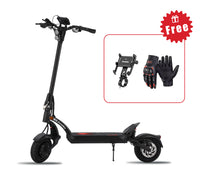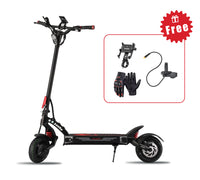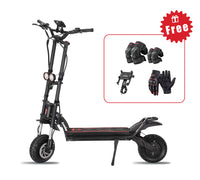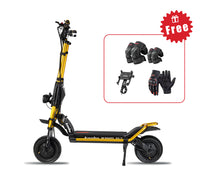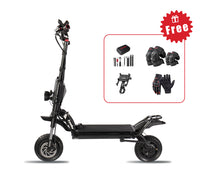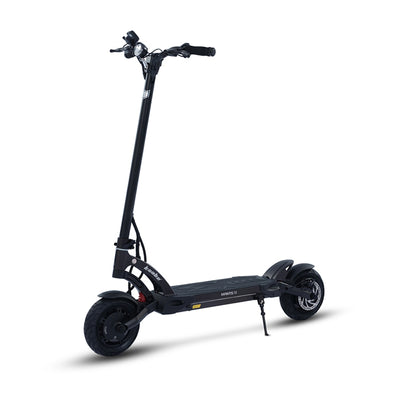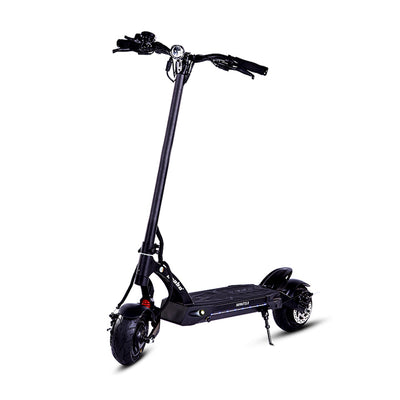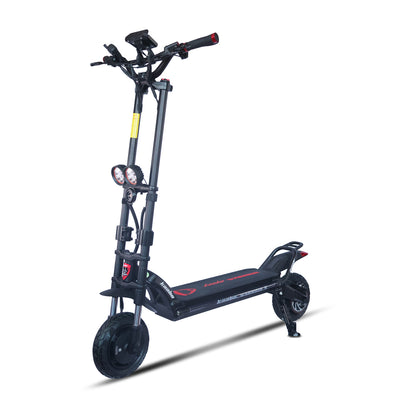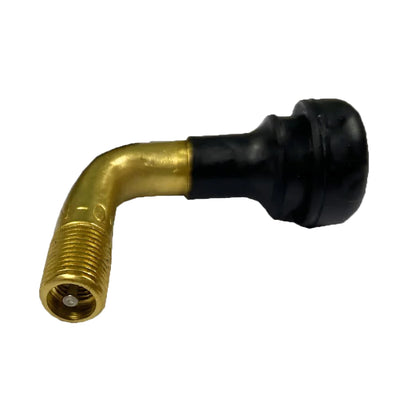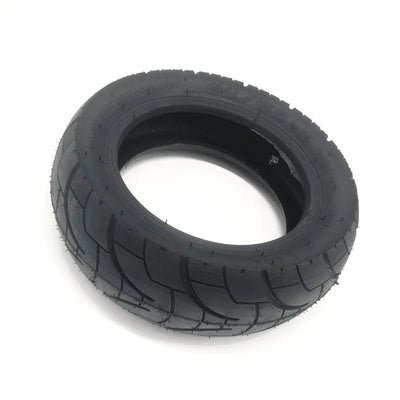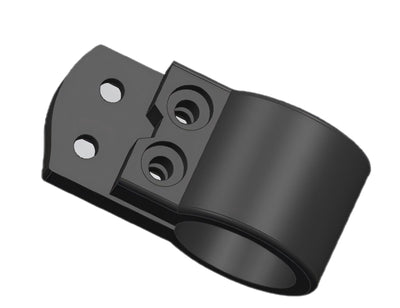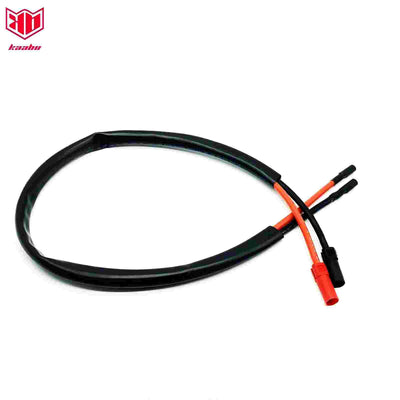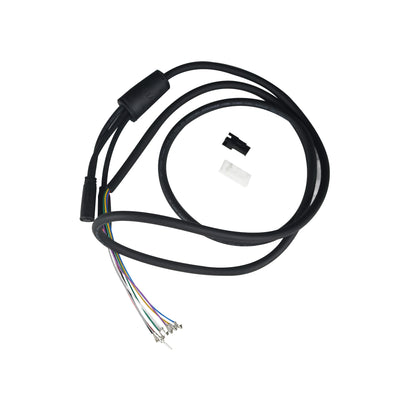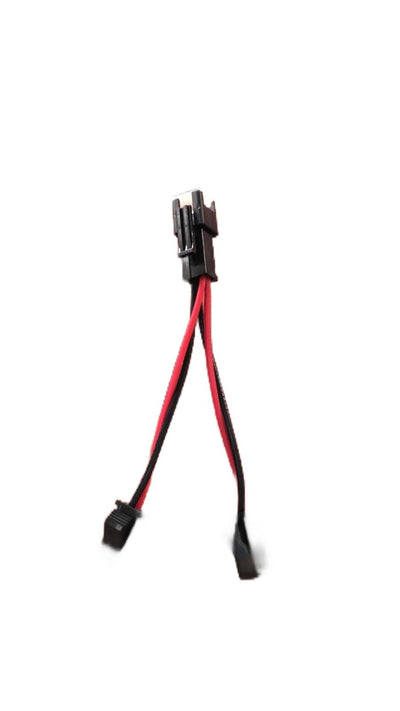Eco-Smart Urban Travel: How E-Scooters Redefine City Movement

Urban mobility has undergone a massive transformation in recent years. Gone are the days when cars and buses were the only options for city commuting. With technology, sustainability, and design innovation converging, E-Scooters have emerged as the poster child of modern, green mobility.
Whether you're commuting to work, running errands, or exploring city streets, E-Scooters—like the Kaabo Urban—offer a practical, eco-smart, and stylish way to move. This blog dives deep into how these compact machines are redefining how we travel, how they support sustainability goals, and why they might just be the key to smarter, cleaner cities.
The Rise of E-Scooters in Modern Cities
It’s impossible to overlook the boom in E-Scooters across major cities worldwide. From New York to Berlin, Singapore, and Dubai, shared scooter fleets and private models have become everyday sights. According to McKinsey & Company, the global micromobility market—comprising e-scooters, e-bikes, and other small electric vehicles—is expected to reach $300–$500 billion by 2030.
The appeal? Flexibility, affordability, and zero emissions. For urban dwellers frustrated by traffic jams and parking headaches, E-Scooters offer freedom and convenience that cars simply can’t match.
Why Cities Need a Green Commute Revolution
1. The Environmental Toll of Traditional Commutes
Urban transport accounts for about 25% of global CO₂ emissions (IEA, 2024). Cars idling in traffic waste millions of gallons of fuel daily. E-Scooters, in contrast, are electrically powered and emit no direct greenhouse gases.
2. Tackling Congestion and Pollution
E-Scooters can replace short car trips—those under five miles—that make up nearly 60% of urban car journeys (EPA data). By shifting to scooters, cities can reduce congestion, noise, and harmful emissions while encouraging active, outdoor lifestyles.
3. Cost and Accessibility
Compared to owning and maintaining a car, E-Scooters cost a fraction. No gas, no insurance, and minimal maintenance—just charge, ride, and go. This accessibility makes them especially appealing for students, freelancers, and commuters.
Meet the Kaabo Urban: The New Standard of Smart City Travel
If we’re talking about E-Scooters redefining city travel, the Kaabo Urban deserves the spotlight. It’s sleek, powerful, and designed specifically for the urban jungle. Let’s break down what makes it a standout choice.
| Specification | Kaabo Urban |
|---|---|
| Max Range | 25 miles |
| Max Power Output | 1092W |
| Max Speed | 25 MPH |
| Battery Capacity | 48V 10.4Ah |
| Climbing Angle | 20 degrees |
| Motor Type | 500W Rear Hub Motor |
| Suspension | Signature C-Shaped Suspension |
| Features | NFC unlock, tubeless tires, foldable, smart charging port |
Design Meets Functionality
The Kaabo Urban isn’t just about mobility—it’s a design statement. Lightweight yet powerful, this scooter balances aesthetics with real-world performance.
C-Shaped Suspension absorbs shocks from bumps, cracks, and curbs, offering a smooth, stable ride on busy streets. Its foldable frame means you can easily carry it onto public transport or tuck it under your desk.
And let’s not overlook the NFC-Ready Dashboard—a futuristic touch that lets you start your ride with just a tap. No keys, no buttons—just simplicity and innovation.
“It’s built for the city, styled for you.” – Kaabo USA
Smart Features for the Modern Commuter
The Kaabo Urban E-Scooter isn’t just about getting from A to B—it’s about making the journey seamless, safe, and fun.
-
Smart Charging Port: Protects against dust, moisture, and debris for long-lasting functionality.
-
6 Riding Modes: From chill cruises to performance rides, adapt your experience instantly.
-
High Ground Clearance: With 6.3 inches of clearance, curbs and potholes are no challenge.
-
Dual Shock Absorbers: Ensure comfort even on rough terrain.
These features make the Kaabo Urban more than a scooter—it’s a personal mobility system tailored for city life.
E-Scooters and the Future of Sustainable Cities
1. Reducing Carbon Footprints
An E-Scooter consumes about 1% of the energy a car uses per mile. That’s a game changer for cities aiming for carbon neutrality. In fact, a report by Transport & Environment (2023) highlights that if 25% of short urban car trips were replaced by e-scooters, CO₂ emissions could drop by over 10 million tons annually in Europe alone.
2. Urban Design Integration
Forward-thinking cities like Paris and San Francisco are already designing lanes and parking zones specifically for scooters and e-bikes. These changes not only reduce clutter but also promote a safer, multimodal mobility ecosystem.
3. Encouraging Active Lifestyles
E-Scooter riders tend to walk more and engage with their surroundings, unlike drivers stuck behind the wheel. This subtle shift contributes to healthier, more connected communities.
Safety, Regulation, and Responsible Riding
As E-Scooters surge in popularity, cities are catching up with regulations to ensure safety and proper usage.
Helmet laws, speed limits, and designated riding zones are now standard in most metropolitan areas. Brands like Kaabo support this movement by incorporating safety tech, such as responsive braking systems and LED lighting for visibility.
According to a CDC study, E-Scooter injury rates are comparable to bicycles, especially when riders follow safety guidelines—proof that responsible riding and good infrastructure make all the difference.
The Tech That Drives the Revolution
Behind every great scooter is some serious tech. The Kaabo Urban is a perfect showcase of innovation meeting practicality.
Battery Performance: With a 48V 10.4Ah lithium battery, riders can cover up to 25 miles per charge, making it ideal for daily commutes.
Motor Power: Its 500W motor, peaking at 1092W, delivers swift acceleration and effortless hill climbs up to 20 degrees—a feat not all E-Scooters can boast.
Smart Controls: The integrated NFC technology adds a futuristic twist to user security and convenience, eliminating the need for keys altogether.
Comparing E-Scooters: Kaabo Urban vs. Competitors
| Feature | Kaabo Urban | Segway Ninebot Max | Xiaomi Mi Scooter 4 Pro |
|---|---|---|---|
| Max Speed | 25 MPH | 18.6 MPH | 20 MPH |
| Range | 25 miles | 25 miles | 28 miles |
| Power Output | 1092W | 350W | 700W |
| Battery Capacity | 48V 10.4Ah | 36V 15.3Ah | 48V 12.4Ah |
| Suspension | Dual C-Shaped | None | Front |
| NFC Unlock | Yes | No | No |
| Foldable Design | Yes | Yes | Yes |
The Kaabo Urban clearly stands out for power, speed, and smart features, making it a favorite among performance-focused urban riders.
E-Scooters and Economic Impact
E-Scooters aren’t just changing commutes—they’re creating jobs, driving local economies, and fueling innovation.
Companies in the micromobility sector have generated over 200,000 global jobs in the last five years (Statista, 2024). From battery manufacturing to app development, the industry supports an entire ecosystem of green tech professionals.
Additionally, shared E-Scooter services contribute millions to local revenue through permits, maintenance contracts, and tourism mobility.
E-Scooters as a Lifestyle Movement
More than a transport trend, E-Scooters symbolize freedom and individuality. They represent a mindset shift—from consumption to consciousness, from convenience to sustainability.
Riders often describe the experience as liberating: gliding through traffic, feeling the wind, and reaching destinations faster while reducing their environmental impact.
In essence, E-Scooters make sustainability cool—and that’s how real change begins.
Challenges Ahead: Infrastructure and Adoption
No revolution comes without hurdles. For E-Scooters, the biggest challenges lie in infrastructure, safety perception, and battery disposal.
Cities must continue investing in dedicated lanes and charging stations, while manufacturers work toward recyclable battery systems. Encouragingly, companies like Kaabo are already leading in this area, focusing on durability and efficiency to reduce waste.
Where to Buy the Kaabo Urban
You can explore the Kaabo Urban and its full specifications directly at Kaabo USA. It’s the ideal choice for anyone looking to embrace eco-smart travel with style, reliability, and performance.
FAQs About E-Scooters
1. Are E-Scooters safe for daily commuting?
Yes. Modern models like the Kaabo Urban include advanced braking systems, lights, and shock absorption for safe, daily city rides.
2. How far can an E-Scooter go on one charge?
The Kaabo Urban offers up to 25 miles per charge, depending on speed, terrain, and rider weight.
3. Do E-Scooters require maintenance?
Minimal maintenance is needed—check tire pressure, brake function, and battery health regularly.
4. Can I ride E-Scooters in the rain?
Most are water-resistant but not waterproof. Light rain is fine, but heavy rain or puddles should be avoided.
5. Are E-Scooters legal in all cities?
Legality varies. Always check your local transport laws. Most cities allow them in bike lanes or shared paths.
The Road Ahead
E-Scooters are no longer a passing fad—they’re the future of city travel. Compact, clean, and connected, they embody everything modern urban life demands.
The Kaabo Urban isn’t just a scooter—it’s a lifestyle choice. It’s about embracing efficiency without sacrificing fun, reducing emissions without losing speed, and owning your commute in a way that feels futuristic yet familiar.
As cities evolve toward sustainability, one thing’s certain—E-Scooters are here to stay, and they’re steering us toward a greener, smarter future.



